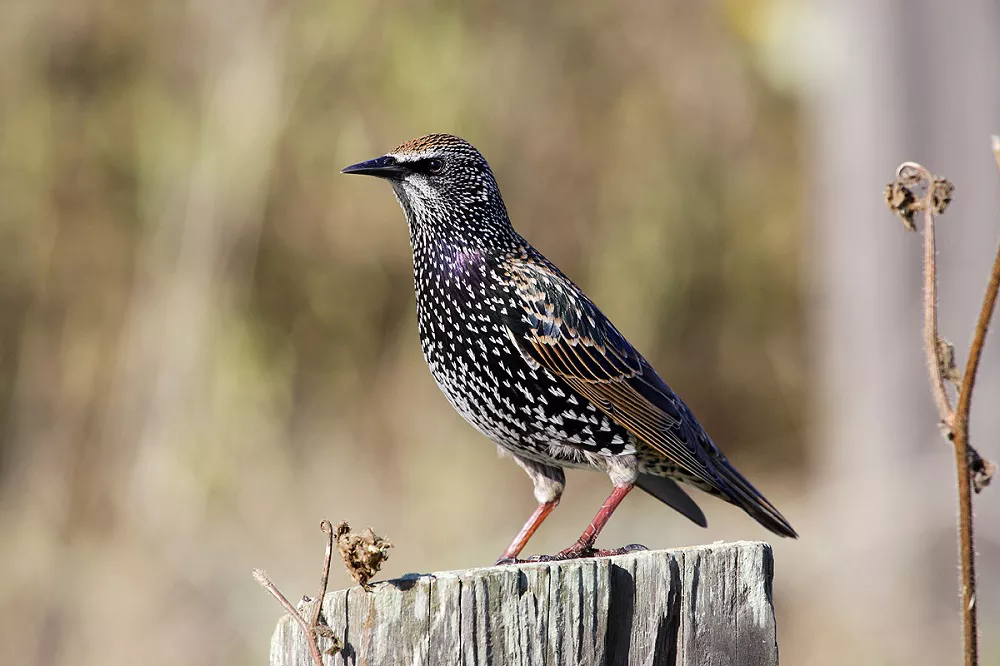The European starling, also known as the common starling, is a bird species that is native to Europe and Asia. It belongs to the family Sturnidae, which includes other species of starlings, mynas, and oxpeckers. The European starling is a medium-sized bird with a distinctive appearance and behavior that have made it one of the most recognizable bird species in the world.
- Appearance
The European starling has a compact, stocky body that measures around 20 cm in length and weighs between 60 and 100 grams. It has a short tail, a strong, pointed beak, and dark, piercing eyes. Its plumage is a glossy, iridescent black with purple and green tones. During the breeding season, adult males develop a bright yellow bill and a few white spots on their feathers.
- Behavior
One of the most notable behaviors of the European starling is its spectacular murmuration displays. In the late afternoon, large flocks of starlings gather in the sky, performing intricate aerial acrobatics that seem choreographed. These displays are thought to serve several purposes, including protection against predators, communication, and mate attraction.
The European starling is also known for its ability to mimic a wide range of sounds, including other bird species, humans, and even machines. This skill is most commonly observed in males during the breeding season, as they use it to attract females and establish their territory.
- Habitat
The European starling is a highly adaptable species that has successfully colonized many parts of the world, including North America, South America, Australia, and New Zealand. It is found in a wide range of habitats, from urban parks and gardens to agricultural fields and woodland edges. In its native range, it is commonly found in farmland, hedgerows, and open countryside.
- Diet
The European starling is an omnivorous species that feeds on a variety of foods, including insects, fruits, seeds, and small vertebrates. During the breeding season, it relies heavily on insects, which it feeds to its chicks. In the winter months, it often feeds on fruits and berries, which it finds in orchards and hedgerows.
- Conservation
Despite its widespread success as an invasive species, the European starling faces several threats in its native range. Habitat loss and fragmentation, pesticide use, and predation by non-native species such as the American mink and the black rat have all contributed to declining populations in some areas.
The European starling is a fascinating bird species that has captured the attention of people for centuries. With its distinctive appearance, complex behavior, and wide distribution, it is a valuable member of many ecosystems. However, like many bird species, it faces numerous threats, and conservation efforts are necessary to ensure its continued survival.


 Facebook
Facebook  Instagram
Instagram  Youtube
Youtube 